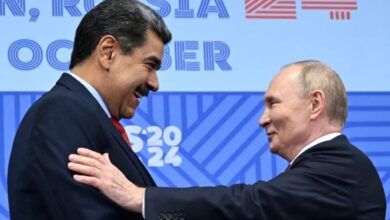World Hunger: The Silent Threat Behind The War In Ukraine
Both Ukraine and Russia are two of the largest exporters of wheat and fertilizer in the world. How can you add the warlike clash between the two countries to the famine present today on the planet? .

Photo: Freepik
LatinAmerican Post | Christopher Ramírez
Listen to this article
Leer en español: Hambre en el mundo: la amenaza silenciosa detrás de la guerra en Ucrania
Until last April 6, the number of deaths left by the war in Ukraine already rose to 1,563, of which 130 are children, according to data provided by the United Nations Organization (UN). However, according to the Office of the High Commissioner of this organization for Human Rights (OHCHR), these numbers could be even higher, taking into account the difficulties that have arisen in communication, from and to Ukraine, to really know how many people have disappeared in the midst of the warlike conflict between Ukrainians and Russians.
Now, bombs and bullets are not the only threats to the survival of hundreds of thousands of people, not only in Ukraine but throughout the world. This war, which began on February 24 with the Russian invasion ordered by Vladimir Putin, could also unleash a global food crisis, knowing that both Ukraine and Russia are two of the largest exporters of wheat on the planet, accounting for 22% of this market, according to data from the International Grain Council.
On the other hand, these two countries, together with Belarus, also affected by the sanctions imposed by the West against Russia, are among the most important nations in the export of fertilizers in the world; Therefore, the war represents that thousands of fields ready for planting throughout the planet cannot be used, since the raw material necessary for this task simply does not arrive.
According to the Observatory of Economic Complexity, in 2019 alone, Russia had a commercial volume of fertilizers of almost 9 billion dollars, which made it the most important exporter in the world in this area. However, the economic blockades on the Eurasian country, as well as the isolation present today in the main Ukrainian ports, has meant that almost two months after the start of the war, the prices of fertilizers have increased by more than 40% of what they were on February 24, as explained by the Green Markets North America in its price index.
You can also read: Latino Communities say "no" to European Mining Extractivism in the Region
World famine?
All these numbers, negative in themselves, have caused the international authorities to activate the alarm, because, according to the executive director of the UN World Food Program (WFP), David Beasley, the levels of global food insecurity are reaching peaks that have not been seen since World War II, that is, more than 75 years ago.
According to the International Food Policy Research Institute (IFPRI) , “many importing countries are even more dependent on these products from Ukraine and Russia. North Africa and the Middle East import more than 50% of their cereal needs and a large part of their wheat and barley from the Ukraine and Russia. Ukraine is a major supplier of maize to the European Union and China, as well as to several North African markets, including Egypt and Libya."
However, the countries of Latin America, especially those in the southern part of the continent, will also be seriously affected, taking into account the poor harvests reported by IFPRI in this area of the world. For example, in the case of Colombia, which currently imports 99.8% of the wheat it uses, the increase in prices could affect the economy, which until now is recovering after the crisis generated by the covid-19 pandemic. Although this country imports grain from the United States and Canada, the truth is that the war in Ukraine has affected the purchase and sale of this product, causing prices to increase at a rate of more than 19.05% per year since January.
In short, and as explained by the WFP, the war between the Ukrainians and the Russians could increase the catastrophic famine in the world, which currently threatens some 44 million people in 38 countries.
According to a report published by this UN office , the shock in Eastern Europe has meant an increase of more than 29 million dollars per month in the costs of its global operations, this without counting the increases that existed before the war and that they exceeded 42 million dollars, since 2019. In this way, the war in Ukraine would mean additional costs for the PMA for more than 71 million dollars per month.
This, according to Beasley, has caused the agency he heads to “have to cut rations for refugees and other vulnerable populations in East Africa and the Middle East (…) Halving rations means that hungry children eat the equivalent a pain of cereal a day”
Of course, these figures have generated terror throughout the world, even more so knowing that the negative numbers are practically the result only of the social, political and economic crisis in Ukraine and Russia, with a touch of the lags caused by the covid-19 pandemic since 2020. So what would happen if we add to this a natural catastrophe like the one seen in late 2020 and early 2021 with Hurricane Iota in the Atlantic Ocean?
“Markets will explode. I don't want to paint a gloomy picture. If the planet is generous with us this year, we should be fine. But a bad blow right now could bring us to the brink of a major food crisis," insisted David Laborde, IFPRI chief analyst, in conversation with NatGeo.




